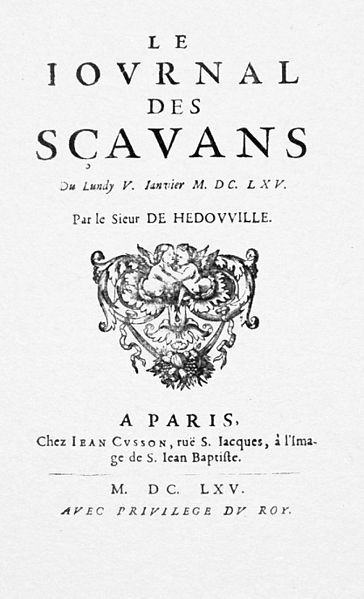Louise Ross is the Research & Impact Development Officer for the Department of Law at Birkbeck. In this post she explores the opportunities and challenges in measuring the impact of research and critiques a couple of examples of research metrics in relation to the work of one academic, Professor Mike Hough.
Resisting seduction ….
Simplicity is very seductive when things are complicated, nuanced, overwhelming or important. In the context of reporting research findings in a non-academic output, you can forgive a bit of over-simplification, perhaps a small loss of sensitivity, a disregard of the least important of the arguments, in the interests of a stronger narrative. Can’t you?
The answer (as with most things in life, I realised in middle age) is: it depends. If your “stronger narrative” means your research findings are read and disseminated by more of the stakeholders who could use it to effect change, and taken up more enthusiastically, then such “simplification losses” can be an acceptable trade-off. But there is a point beyond which these losses aren’t tolerable, when you feel you’ve compromised too far. Where that boundary is, is a judgement call that I’m sure all researchers have had to make when translating their findings for a non-academic audience.

A similar judgement call made by Birkbeck’s Impact Officers and others, relates to the use of various publication metrics. The notion that we can easily measure productivity, impact and research quality is seductive, but erroneous (despite the claims of some of these metrics!). Metrics need to be approached with caution, or “responsibly” as we express it in Birkbeck’s policy. Please be reassured that Birkbeck’s impact officers understand the limitations, conditions and prohibitions of these measures!
I’m going to discuss two examples, the h-index (a citation measure); and something created to complement this kind of traditional citation metric, Altmetrics (which identify and measure the online attention garnered by a research output). I’ve approached both very cautiously and would characterise them as a source of illumination and ideas, especially Altmetrics.
I honestly haven’t considered citation measures for any of my Law School colleagues in my role, with the exception of Professor Mike Hough, now Emeritus Professor. And in his case, only because the level of his citations was specifically mentioned in his 2018 retirement lecture. For those of you who don’t know him, Professor Hough is a criminologist, with a long and esteemed career producing policy-oriented research.
I say esteemed, not because of some metric, but because Professor Hough was the recipient of the 2021 Outstanding Achievement Award of the British Society of Criminology (for his long contribution bringing together academic and policy research); and the 2020 European Criminology Award of the European Society of Criminology (for his lifetime contribution to criminology.) Although at Hough’s retirement lecture, no less than the Dean of our School of Law, Professor Stewart Motha did refer to Mike’s citation data: “Just one measure of Mike’s scholarly influence is that from 2006 to 2010, he was the second most cited author in the British Journal of Criminology, and the eleventh most cited across five international journals.”
Mike put this in context when responding, by estimating that of the 300 odd publications he had produced over his career, fifty had been cited by other academics around fifty times; and of those, 25 had been cited a lot more than that. I did enjoy his next comment, made with wry self-deprecation “But what’s quite bad is that 100 of them have been barely cited at all; no references – absolutely disappeared off the face of the earth. And I wonder why I bothered with those 100. I mean I could have bunked off work every third day and nobody would have noticed. And so, I’ve sacrificed quite a lot of my career on the altar of unread research.”
So, there’s one drawback of citation metrics. Perfectly sound research might not get cited. Even Mike Hough couldn’t explain why.
Even with one-third of his research “a flower born to blush unseen, and waste its sweetness on the desert air”*, Mike’s h-index is currently an impressive 70 (so in line with his 2018 assessment). The h-index measures both volume and citation together, a score of 70 meaning an author has at least 70 papers each cited at least 70 times. If Mike had produced fewer papers, or they were cited less, his score would thus be lower. You can find Mike’s score on his Google Scholar profile page.

Does it do any good to compare scores? I’ve said Mike’s score is impressive, but that’s only because I already had the context that he is both a productive author (having a relatively large number of outputs, more than one hundred in BIROn for example) and a highly cited one [thanks to this citation analysis, Most-Cited Scholars in Criminology and Criminal Justice 1986-2010, Cohn E.G, Farrington D.P & Iratzoqui, A., Springer (2014)]. Without this context, I wouldn’t have known how his score compares to other criminologists.
I definitely would not attempt to compare scores with researchers from other disciplines; because practices that affect citations differ so much. Just consider the attribution of authorship. In the humanities and social sciences, authorship is attributed to those who wrote the item; in many other disciplines, authorship can be attributed to all those (possibly dozens or even hundreds) who made a contribution to the work (including data collection, data analysis, or methodology). I believe a 2015 physics paper (from the teams operating the Large Hadron Collider) had a record-breaking 5,154 authors.
If I looked at the h-index of the eleventh most cited physicist in Google Scholar (because Mike was the eleventh most cited criminologist, that’s the extent of my shonky logic), the individual in question is Hongjie Dai, a nanotechnologist and applied physicist at Stanford University, who has a h-index of 203. What does that mean? Probably nothing except to confirm that scientists will almost certainly have higher h-index scores because they are listed as authors in more papers.
So, I characterise the h-index as interesting contextual information only, subject to lots of limitations and health warnings, and on my radar only because Mike’s citation data was already the subject of discussion as an indicator of esteem. It’s quite possible that more colleagues will be spotlighted by citation analyses such as that carried out by Cohn et al, which might prompt me to see what their h-index is, but I can’t envisage a scenario where I would look at it otherwise.
Altmetrics is a different proposition. I have actually used this metric to inform my work. Without giving away too many trade secrets, I used it to identify which policy-makers are discussing a particular piece of research i.e., who it had reached. Obviously the first step is to ask the researcher themselves who their policy contacts are, but sometimes a paper has an independent life and momentum of its own and reaches parts other research cannot reach (to co-opt the famous Heineken slogan). It may be in some global body’s library or resource bank, or on their agenda, unbeknownst to the original authors. Altmetrics links search results to the DOI of the output (a unique identifier, yay), so it caters for others’ poor practices such as omitting authors’ names, shortening the title, or misattributing institutional affiliations (e.g., University of London, rather than Birkbeck).
Many outputs in BIROn now have their Altmetric score on their landing page, it is widely used by publishers. Look for the multi-coloured doughnut. Professor Hough’s article Why do people comply with the law? Legitimacy and the influence of legal institutions has an Altmetric score of 159, including three policy sources. Relatively few outputs have any kind of significant Altmetric score, so don’t worry if your outputs aren’t scoring like this.

Bibliometric analysis seems to be a growing field of study; and the impact agenda is here for the foreseeable future. It seems likely therefore that citation data, and other metrics that promise to identify and track impact are going to continue to be a feature of the impact officers’ landscape. But be reassured that we are not so easily seduced by metrics promising to “measure impact” for us – ha! We expect only some limited useful insights and, even then, we will be meanly calculating whether it’s worth the cost of our time to wandering through these foothills.
*Elegy Written in a Country Churchyard, Thomas Gray (1751).
If you’re interested in responsible research metrics and evaluation, do join us for London Open Research Week, when on Wednesday 27th October 4 –5pm Andrew Gray will present on Responsible metrics: developing an equitable policy and Stephen Curry will look at The intersections between DORA, open scholarship, and equity.
View the full programme of events and book a place here. All events will be held online using MS Teams.
Connected people image Gordon Johnson. Faceless crowd image by Clker-Free-Vector-Images. Earth image by Gerd Altmann.






